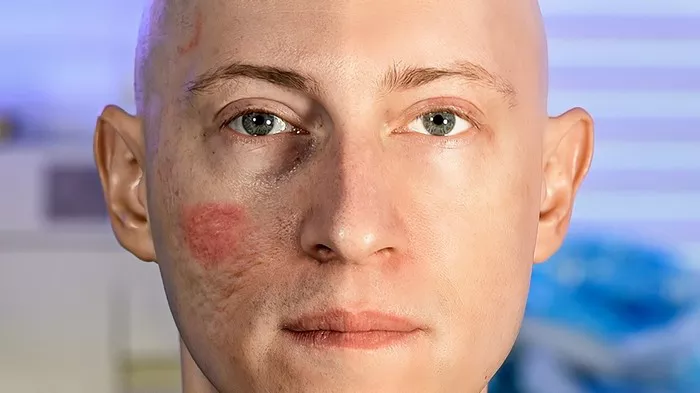Scars are not just reminders of past wounds or surgeries; they can also present various health risks that might affect an individual’s well-being. While often considered purely cosmetic issues, the implications of scarring can extend much deeper, affecting physical functioning, mental health, and overall quality of life. This comprehensive article delves into the complexities of scars, exploring the potential dangers associated with different types of scarring and offering insights into effective management and treatment options.
The Nature of Scars: More Than Skin Deep
A scar is the body’s natural response to wound healing following an injury, burn, surgery, or infection. The formation of scar tissue is a fundamental aspect of the healing process, involving the deposition of collagen fibers to repair the damaged skin. However, the newly formed scar tissue differs from the original skin in texture, appearance, and functionality.
Types of Scars and Associated Risks
Scars vary widely in their appearance, characteristics, and potential for causing complications. The primary types include:
Hypertrophic Scars: These are raised, red scars that remain within the boundaries of the original wound. They can be itchy or painful and may restrict movement if located near a joint.
Keloids: Keloids are an overgrowth of scar tissue that extends beyond the original wound area. They are more common in individuals with darker skin and can cause significant discomfort, pain, and impairment of movement.
Atrophic Scars: These scars create sunken or pitted areas on the skin, commonly resulting from acne or chickenpox. Atrophic scarring can lead to significant cosmetic concerns and affect an individual’s self-esteem.
Contracture Scars: Resulting from burns, these scars tighten the skin, potentially impairing movement and functionality. In severe cases, contracture scars can affect muscles and nerves beneath the skin.
Physical Complications: When Scars Impair Functionality
Scars, depending on their size, location, and severity, can lead to a range of physical complications:
Restricted Mobility: Scars on or near joints (such as elbows, knees, or ankles) can restrict the range of motion, leading to stiffness and pain during movement. This is particularly common with contracture scars.
Chronic Pain: Some scars can become chronic sources of pain, especially if they involve nerve damage or are prone to inflammation due to their hypertrophic or keloidal nature.
Neurological Issues: Deep scars can affect underlying nerves, potentially leading to numbness, tingling, or even neuropathic pain.
Increased Risk of Further Injury: Scarred skin lacks the flexibility and resilience of normal skin, making it more susceptible to injuries.
Psychological and Emotional Impact: The Invisible Scars
The impact of scars is not limited to physical health; it can also extend to psychological and emotional well-being:
Self-Esteem and Body Image: Visible scars, especially on the face or other exposed areas, can significantly affect an individual’s body image and self-esteem. This can lead to social withdrawal, anxiety, and depression.
Post-Traumatic Stress Disorder (PTSD): Scars resulting from traumatic injuries can be constant reminders of the trauma, potentially triggering PTSD symptoms in some individuals.
Stigmatization and Discrimination: In some cases, individuals with noticeable scars may face stigmatization or discrimination, which can affect their personal and professional lives.
Management and Treatment of Scars
Advances in dermatological treatments have provided many options for managing and minimizing the appearance and complications of scars:
Topical Treatments: These include gels, tapes, and external compression which can help in managing the size and texture of hypertrophic scars and keloids.
Steroid Injections: Regular injections of corticosteroids can reduce scar tissue formation, especially in keloids and hypertrophic scars.
Laser Therapy: Laser treatments can reduce scar pigmentation and flatten raised scars, improving their appearance and texture.
Surgical Removal: In severe cases, surgical revision of scars may be necessary, particularly for scars that cause significant functional impairment.
Psychological Counseling: For individuals experiencing emotional distress due to scarring, counseling or therapy can be beneficial.
Conclusion: A Comprehensive Approach to Scar Management
Understanding the potential dangers associated with scars is crucial for effective management. By recognizing the physical and psychological impacts, individuals affected by scarring can seek appropriate treatment and support. Health professionals play a pivotal role in educating patients about the risks associated with different types of scars and the available treatment options. With proper care, the risks associated with scars can be significantly mitigated, allowing individuals to lead fuller and more comfortable lives. As research continues and treatment technologies advance, the future holds promise for even more effective scar management and rehabilitation strategies.
[inline_related_posts title=”You Might Be Interested In” title_align=”left” style=”list” number=”6″ align=”none” ids=”7673,7670,7667″ by=”categories” orderby=”rand” order=”DESC” hide_thumb=”no” thumb_right=”no” views=”no” date=”yes” grid_columns=”2″ post_type=”” tax=””]































